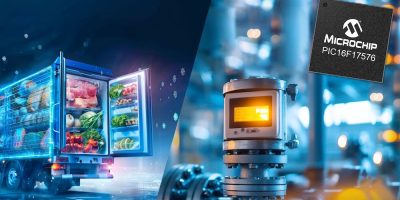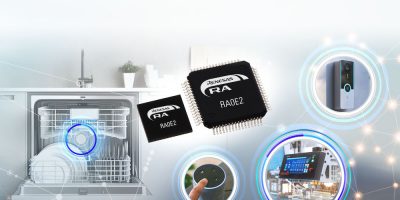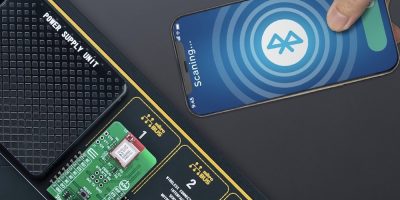Microchip has released the PIC16F17576 microcontroller (MCU) product family with integrated low-power peripherals and the ability to precisely measure volatile analog signals.
PIC16F17576 MCUs feature a new low-power comparator and voltage reference combination that can operate while the MCU core is in sleep mode, allowing for continuous analog measurement while consuming less than 3.0 µA of current. The Analog Peripheral Manager (APM) controls which peripherals are active to minimise total energy consumption and enable battery-operated applications to monitor signals effectively without excessive power drain.
Engineered for applications that measure volatile analog signals, PIC16F17576 MCUs include operational amplifiers (op amps) with software-controlled gain ladders. This feature enables a single op amp to switch between multiple gain options, helping mitigate noise while maintaining precision and power efficiency. Equipped with up to four op amps and a 12-bit differential ADC with automated averaging, the MCUs enable precise signal measurement over a wide range of inputs.
“Sensor systems can quickly become complex, often requiring multiple analog components that add board size, cost and power draw,” said Greg Robinson, corporate vice president of Microchip’s MCU business unit. “With the integrated analog features in our low-power PIC16F17576 MCUs, we’re cutting that complexity. You can eliminate parts and reduce power consumption, cutting costs and simplifying the overall design process.”
PIC16F17576 MCUs are well suited for measuring analog signals in a number of industries, including environmental and industrial monitoring, smart home and building automation. Key applications include vibration and strain measurement, flow metering, gas detection, cold asset tracking and motion sensing.
Development Tools
PIC16F17576 MCUs are supported by MPLAB X Integrated Development Environment (IDE) and MPLAB Code Configurator which allows designers to easily manage the functionality of the APM and analog peripherals. The devices are compatible with Microchip’s Curiosity Nano EV14L29A development board and MPLAB PICkit development tools.







